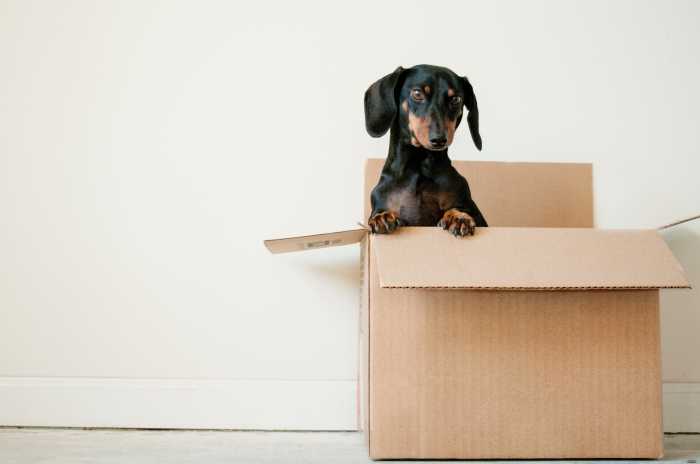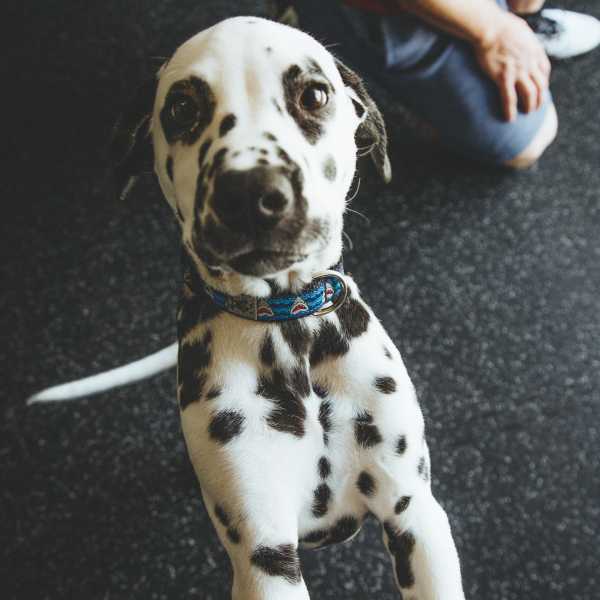
How To Keep Your Dog Happy and Healthy During Your Move
Posted on 26 August, 2020

Photo by Erda Estremera on Unsplash
Written by Marvin Magusara from WhatStorage
Dogs are extremely territorial, so relocating to a new home can be extremely difficult. However, just because they find themselves attached to one place does not mean they cannot learn to adapt. 26% of UK residents who own dogs should learn how to keep their canine friends happy and healthy throughout this transition.
Common Stress-Triggers For Dogs
Each dog is unique, and their stress-triggers may vary according to their age, breed, and history. Some dogs may be more skittish than others, and calming methods may differ as well. It is always best to be aware of what makes them uncomfortable and create a system to respond to these things. Here is a brief rundown of common stress-triggers for dogs:
- Loud noises
- Travelling in a car
- New environments
- Being surrounded by strangers
- Separation
- Psychological triggers*
Ultimately, when you fail to address their need for security, you induce stress. When you are relocating to a new area, you are bound to encounter multiple triggers.These triggers should be approached in a calm and gentle manner. Take your dogs out of the high-stress environment and soothe them. Long-term stress can negatively affect your dog, so prevent it as much as you can.
The Moving Day Circus
Your dog may not seem stressed on your moving day when they seem just as playful as usual. However, don’t forget that this is still a disruption of their territory and routine. There are two things you can do to manage your moving day:
Hire Additional Help
Relocation demands a lot from you and your pet. The best way to go about your move is to do it as quickly as possible so you can take them out of your high-stress situation. Hiring additional assistance can give you that much needed time and wiggle room to care for your dog. Finding a reliable removals service to pack and transport your items can be a game-changer. Instead of splitting your attention between your pet and your move, you can leave the work to the professionals. This choice is especially helpful when your dog has been abandoned or rehomed in the past. The lack of attention and affection during the stressful weeks leading up the move can trigger their separation anxiety.
Separate Your Dog From The Moving Work
On your moving day, separate your dog from the moving work. There is so much going on, think about what it might look like from their perspective. They see strangers taking apart their territory and making loud noises as they do so.
Even if they don’t mind, they cannot helpfully lend themselves to the situation. Instead of letting them roam around the flat, take them outside or keep them in an empty room. The ideal arrangement is being close enough to address the crew’s questions and concerns while not being in the same space.
If you plan on DIY-ing your move, and you don’t have the capacity to properly watch over your pet. You can take your pet to visit family or friends and leave them there for the day. If there is no one available, you can hire a dog-sitter to keep your furry friend occupied in another room. While separating them from the moving work is your priority, it is important that they are not left unattended in case they run outside or topple over precariously stacked items. Their safety should also be a top concern.
Dogs And Car Rides
Car rides are an unusually pleasant experience for most pets, including dogs. Think about every car ride they had to date. Chances are they only find themselves in cars when you are taking them to the vet or the pet groomers, which usually happens 2-3 times a year. If their only experience for car rides is going to the vet, they may associate it with bad memories.
Dog-owners are encouraged to use classical conditioning methods to help them become accustomed to travelling by car. If your dog is okay with car rides, then you have an excellent working base. Your goal, then, is to slowly increase the period they can stay in the car. Moving to a new home can range from a 30 min drive to over half a day, and that isn’t accounting for UK traffic. When you have a good idea of how long they can stay in the car, you can plan for the short breaks on the road.
If your dog has never been in a car before, it is time to get down to work. The first step is to crate-train your dog. Sudden stops and swerves can mess with their balance and induce more anxiety. When you have a young puppy, their ears are still developing so they are more prone to motion sickness. Keeping them in their carrier is a safe way to travel with your pet.
Start your crate-training at home and slowly work your way up to a car ride. Even if your dog is comfortable in their carrier, you should still introduce them to the car, since it counts as new territory. Introduce the space with the engine turn on and off and show them that it is a harmless place. Remember to give them plenty of treats and words of encouragement. The positive reinforcement can help your dog overcome their fear and wariness with your vehicle.
After your introduction, teach them that it is their space too. Feed your dog in the car and take short trips around the block until they become accustomed to it. When you don’t see signs of anxiety or tension, your dog is ready to travel by car!
Dogs And Motion-Sickness
When your dog does not get used to regular car trips, they may experience motion sickness. Your dog’s symptoms can include:
- Excessive vocalisation with howls and whining
- Restlessness and frequent pacing
- Excessive drooling
- Constantly licking their lips
- Lethargy
- Vomiting
When you don’t create a plan for your cross-country move, you may be stuck inside a car filled with dog vomit along with a very sick pet. The only long-term solution is slowly acclimating your dog. However, when you don’t have the luxury of time, there are other things you can try to better manage your dog’s motion sickness.
Before your trip, avoid feeding them full meals, so you don’t have to deal with the vomit. Keep them well-hydrated instead and give them snacks during your short breaks. If they do not handle car trips very well, then you can look into medicating them. Consult your vet and get anti-nausea or anti-anxiety medicine.
Leave their favourite toys and comfort items like an old blanket or your clothes and let the familiar scent soothe them. Other things you can do to keep them calm is by making adjustments to the environment. Keep your car well-ventilated by either rolling down the windows or turning on the air conditioner, and avoid playing loud music. By following these steps, your dog can have a comfortable trip.
The key to a smooth relocation is a lot of patience on your part. While you try to tie up any loose ends and plan your new life, you need to consider the unsettling changes your dog is experiencing. As a pet that doesn’t adapt to change very well, you have to introduce the concept of moving well-before you even begin to call your removal service and cancel your lease. And the work does not stop there. When you get to your new home, set their bed and food bowl down, then maintain their regular routine. When you follow these tips and tricks, your dog is sure to be happy and healthy during your move!
Written by Marvin Magusara from WhatStorage
For more information, please visit: www.storefirst.com/storage-news/stay-store--or-sling--decluttering-tips-for-downsizing
Tags:



